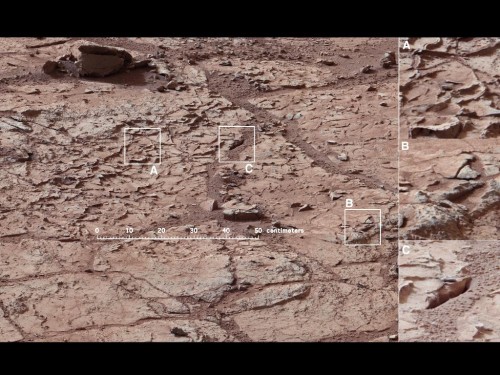By Michael Banks in Boston
John Grotzinger, project scientist for NASA’s Curiosity mission, might be best known for whipping up a media frenzy in late November when he told NPR that data from one of the probe’s 10 instruments was “gonna be one for the history books”.
While the news that the probe had discovered evidence of organic molecules in the soil but more tests were needed was less than earth shattering, today at the 2013 AAAS meeting in Boston, Grotzinger gave an update on the mission that touched down on Mars on 6 August 2012.
If you don’t fancy reading any more, the bottom line is that everything is working as expected.
Yet that alone is quite impressive, given the dangers of pulling off such an audacious landing as was employed by Curiosity.
Indeed, Grotzinger showed a video of the so-called seven minutes of terror. This involved the probe surviving the harsh environment of Mars’s atmosphere on entry before deploying a parachute to reduce its speed and finally using a “sky crane” that safely lowered the probe to the surface by a tether. Every stage of the landing could have gone wrong, but it didn’t. The video concluded to rousing applause from the audience.
After taking us through some of the recent highlights of the mission, such as the first use of the probe’s scoop to gather soil from the surface as well as the latest high-definition images of Mars, we learned that Curiosity is now utilizing the next piece of onboard kit – its drill.
“We are drilling on Mars as we speak,” says Grotzinger, who adds that if you want to search for organic compounds then you really need to drill in the rock to get to the parts that have not been bombarded by radiation for thousands of years.
Indeed, scientists will be looking forward to when Curiosity finally starts driving up Mount Sharp towards a part of the rock formation where it was more Earth-like and wet.
If anyone was expecting any more quips from Grotzinger about possible history-defining results that may be coming soon, they would have been disappointed. But maybe he has learned his lesson.

When the Mariner 9 probe arrived at Mars in 1971, the world expected to see crisp new pictures of surface details of Mars. Instead they saw a near planet-wide dust storm with only the giant volcano Olympus Mons showing above the haze. The storm lasted for a month, an occurrence scientists have since learned is quite common on Mars. In mid-2007 a planet-wide dust storm posed a serious threat to the solar-powered Spirit and Opportunity Mars Exploration Rovers by reducing the amount of energy provided by the solar panels and necessitating the shut-down of most science experiments while waiting for the storms to clear. Following the dust storms, the rovers had significantly reduced power due to settling of dust on the arrays. It has been suggested that dust storms on Mars could play a role in storm formation similar to that of water clouds on Earth. Observation since the 1950s has shown that the chances of a planet-wide dust storm in a particular Martian year are approximately one in three